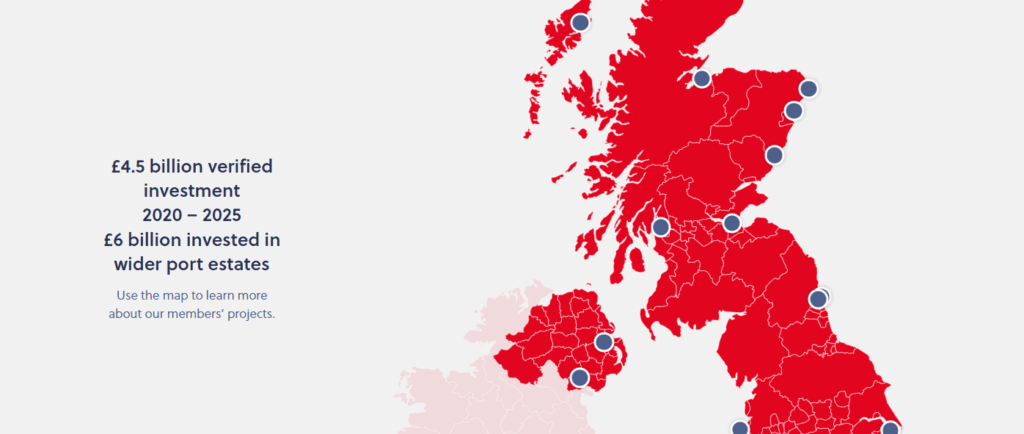The British Ports Association (BPA) has today published its UK Ports Investment Showcase 2020–2025, highlighting more than £4.5 billion of verified investment in port infrastructure and equipment across the country over the last five years.
BPA research found that ports have invested:
At least £4.5 billion investment in infrastructure and assets between 2020 – 2025
At least £6 billion invested in wider port estates (such as new warehousing for logistics firms, offshore wind cable factories, etc.)
Ports are buying kit, extending capacity and electrifying operations so the UK can move more, faster, and cleaner. This is happening everywhere: offshore wind hubs in Scotland, new container capacity on the Humber, and upgrading the cruise passenger experience on the South coast.
- Driving Net Zero: through shore power, clean fuels, and electrified cranes and vehicles.
- Boosting Trade: by deepening channels, extending terminals and installing new handling equipment to move goods faster and more reliably.
- Creating Growth: with thousands of construction jobs today, and high-value logistics, manufacturing and offshore wind opportunities tomorrow.
This is private capital flowing into critical national infrastructure. They are backing themselves by committing billions of pounds to stay competitive for decades to come. Explore the BPA’s map of port investments below to learn more about how the industry is preparing.
“These figures show the scale of private capital being reinvested in the UK’s ports.
Ports are backing themselves with billions of pounds to stay competitive, cut emissions, and support national growth. This is more than quays and cranes, it’s about building the infrastructure for Britain’s economy and supporting the industries of tomorrow.”
Together, these projects add up to a sector that is modernising at pace. The BPA’s Investment Map is now live, allowing users to explore port infrastructure projects nationwide. The BPA will be publishing more details on the wider investment landscape in UK ports in the coming weeks.

